* (restored)
—-

‘French director Jean Rollin had a career-long fixation on deeply sexual, hideously gory vampire films, suffused with delicate, dreamy poetry that claimed him a niche audience of committed fans. His pictures are an odd, uncommercial blend of pornography and Gothic horror, entrancing and addictive to the select few. A listing of Rollin’s film titles hints at the strange images on display in his movies–but it only hints. Within the films themselves, a bounty of exotic, sadistic perversities awaits: lovers are sealed in a coffin that drifts out to sea, a marriage ceremony weds a pair of vampires, a female vampire frantically slices open her arm and drinks her own blood, a coven of vampires chain women victims to the walls of a dungeon, a crew of pirates tortures the survivors of a shipwreck, upper-class women convene at a chateau for ritualistic blood drinking, and that’s just for starters.
‘The low-budget independent film industry in 1970s France was a sex industry. The liberalisation of censorship gradually opened up to hard-core porn, which soon dominated the slates of exploitation producers. Rollin, personally obsessed with his own visions of erotic vampires, cleaved an idiosyncratic path. He did his share of straight sex pictures, and often cast porn stars in his horror epics (since they were used to performing in the nude, whatever their thespian abilities), but he spent most of his producers’ money on deeply personal films with little regard for their commercial prospects.
‘From 1968’s Le Viol du vampire (Rape of the Vampire) onwards to the present day, Rollin has exercised what Tim Lucas calls “one of the purest imaginations ever consecrated to the horror genre.” Rollin improvised one picture in its entirety—Requiem pour un vampire (Requiem for a Vampire, 1972)—which was the only one of his films to get a US theatrical release, thanks to sexploitation master Harry Novak who distributed it as Caged Virgins. And Rollin’s Les Raisins de la Mort (Grapes of Death, 1978) was the first notable “gore” film made in France.
‘But of his oeuvre, Fascination (1979) arguably ranks as Rollin’s finest work. An excellent-and of course heavily sexual-psychological thriller, Fascination presents a group of rich socialites who indulge in the drinking of bull blood as a cure for anemia—only to develop an insatiable taboo thirst for the human stuff. They sate this thirst in elaborate ritual gatherings to which they “invite” male victims. Thoughtful, sensual and lushly photographed, Fascination is a unique production, and undoubtedly the most accomplished work ever made with a porn-star cast.
‘Rollin’s movies combine pulp imagery with the plot mechanics of serials. You’ll find American models combined with the classic French serial tradition of Louis Feuillade, as epitomized by Les Vampires and Fantomas. In contrast to his enticingly hyperactive subject matter, Rollin’s approaches storytelling with a cool, dispassionate eye. Whereas directors such as Jose Larraz (Vampyres) and Jess Franco (Succubus) indulged in intensely emotional subject matter and images, Rollin preferred languid, morbid contemplation. So while his subject matter involved comic book aesthetics, Rollin filtered his storytelling through a high art sensibility.
‘Inspired to be a director by a childhood screening of Abel Gance’s Capitaine Fracasse (1942), Rollin also cites Georges Franju’s Judex (1963) as a major influence; and by extension, a line of influence can be traced all the way back to Louis Feuillade himself. Rollin also took a great deal from his mentor, the surrealist Ado Kyrou. Admits Rollin, however, “You know, there isn’t really a French tradition of fantastic cinema. I don’t think it can be said that I am a representative of French fantastic culture per se.”‘ — collaged from various sources
____
Stills
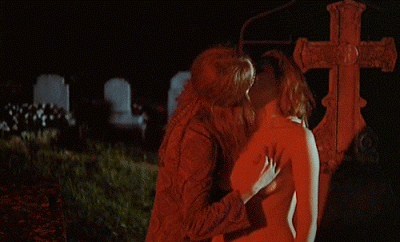








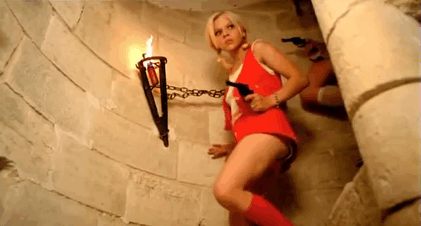
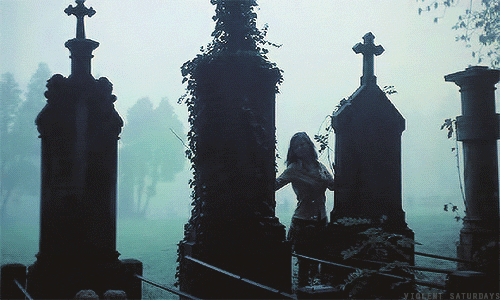
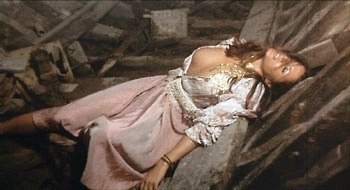

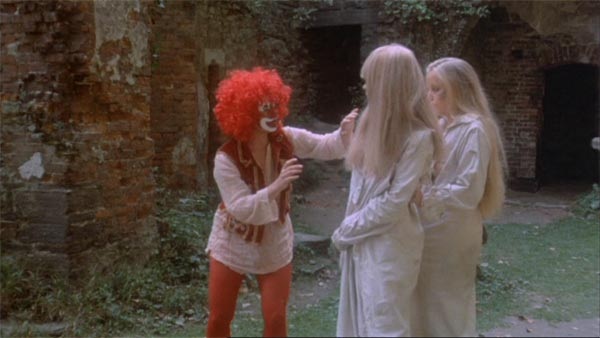

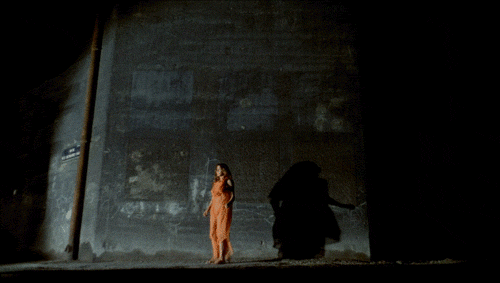







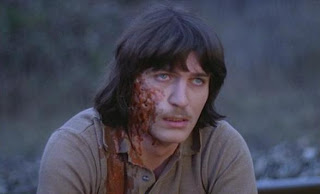










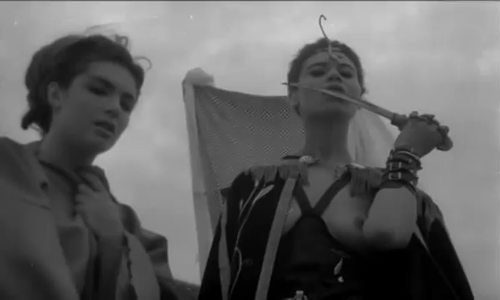
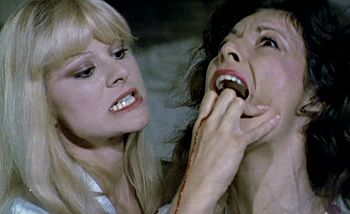






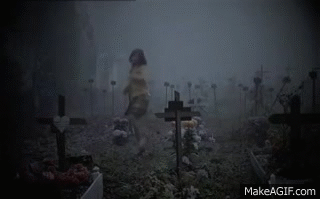






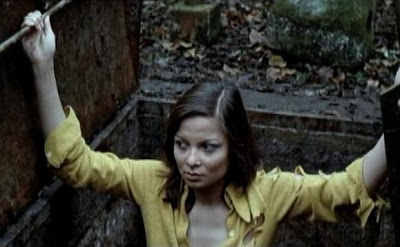







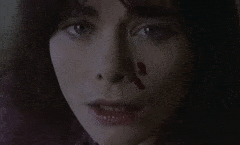
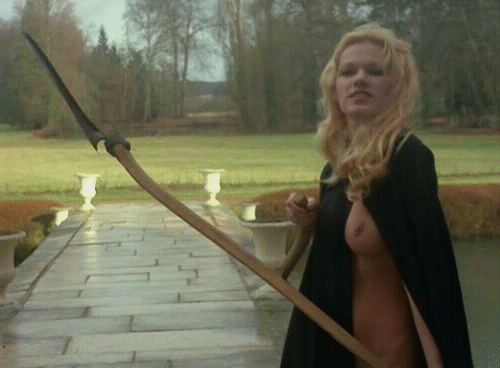
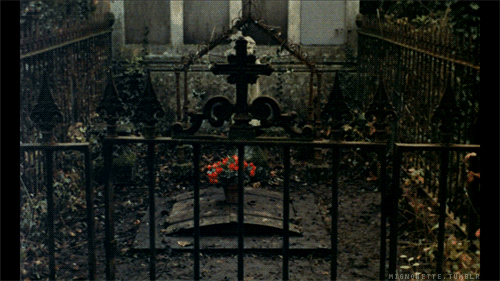
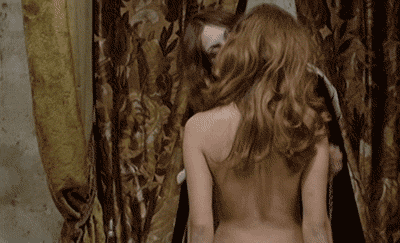



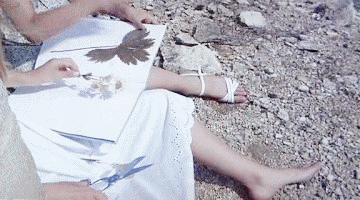




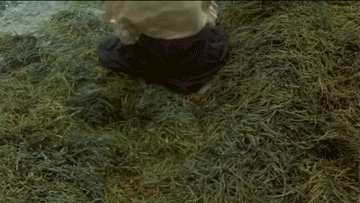
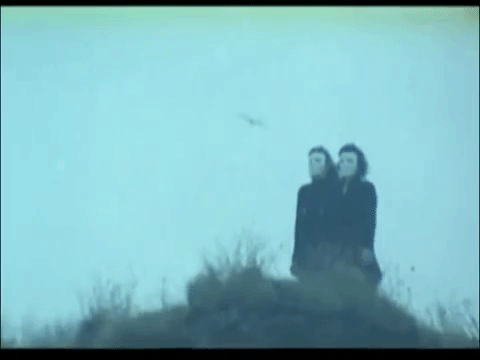

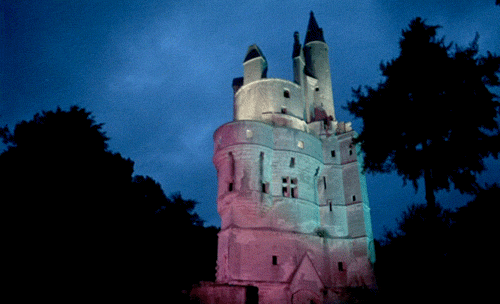
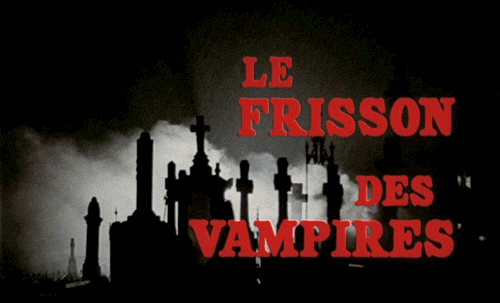
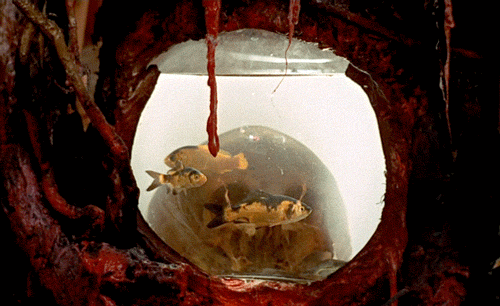
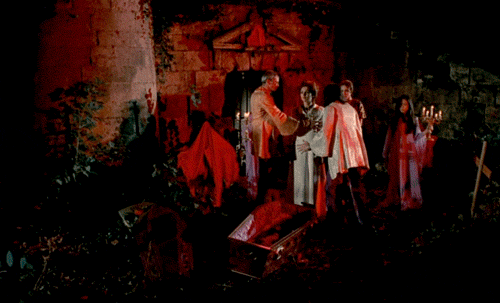

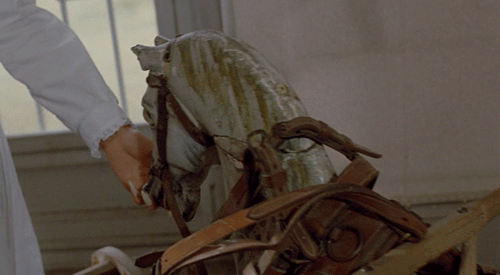

______
Further
Fascination: The Jean Rollin Experience
The Official Jean Rollin Website
Jean Rollin @ IMDb
The Films of Jean Rollin
The Jean Rollin Society @ Myspace
Jean Rollin page @ Facebook
‘Jean Rollin Sucks Retarded Turtle Dick’
Jean Rollin Memorial Page @ mubi
Jean Rollin DVDs @ Amazon
______
General
Documentary: Jean Rollin Cinéaste de nulle part 1
Trailer: Jean Rollin, le rêveur égaré
Jean Rollin interviewed in 2006 (in French)
_______
Interview
from Kinoeye
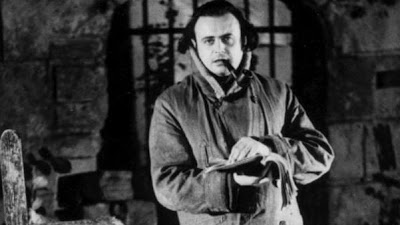
Vampires burst from grandfather clocks, lovers are speared on the same stake—you are noted for your imagery, not your narratives—is this a fair comment?
The answer is this. The imagery in my films is certainly more important than the story itself. But the stories are done to provoke such images. In a certain way, the stories are “mad love” stories and the images are surrealist visions. The mixture of both makes my films.
You have been roundly condemned by critics for your excursions into pornographic/hardcore films—what is your response to such criticism?
I shoot X-[rated] films to have sufficient money to be able to live. I don’t like the films but to make them can be amusing. I remember that period with pleasure. I liked the people I was working with, it was always one- or two-day shoots, very funny, a good friendly atmosphere. But no interesting films, that’s all I can say.
What influence did the likes of Georges Franju and Luis Buñuel have on your career?
It’s the same kind. Buñuel shot visions like Trouille did paintings, or Magritte. We can take some images off the film, those images speak for themselves. They are independent of the story, they are the voice of Buñuel himself. So, in a film so banal in appearance like Susana (1950) or even Él (This Strange Passion, 1952), everything is shown by the vision of the artist. Personally, I am jealous of an extraordinary vision I saw in one of Buñuel’s last French films. I don’t remember which one but: a man closes a coffin, and some gold hairs from the dead girl inside are visible.
Such imagery leaves me full of exaltation. There are many such imags in Buñuel films. Franju is the author of the greatest film of the genre, Les Yeux sans visage (1959). Perfection of the script, of the actors, of the light, of everything. I was haunted during many, many years by the end, Edith Scob walking in the park with her face covered by the white mask, and the white birds and that music… I have tried to find that atmosphere of dream, poetry and madness in many of my films.
Same reflections about Judex (1963). It’s a serial, like a serial. For me, where the cinema is near the surrealist poetry, near the primitive mind of childhood, it is the serial. My remembrance as a child is of the serials I saw after school every Wednesday—Zorro Fighting Legion, Mysterious Docteur Satan, G-Men Versus the Black Dragon, etc. I think I personally have shot two serials: Le Viol du vampire and Les Trottoirs de Bangkok (Sidewalks of Bangkok, 1984). Here a critic said, “Rollin has done with Bangkok the same film as his first one, Le Viol, 25 years after.” And it’s true! Bangkok is a kind of “Fu-Manchu” and the film was improvised to a great degree like Le Viol. When I was shooting it, I was in the same mind that I was for Le Viol. I was 20 years old again!
Your first fantasy film Le Viol du vampire was considered daring for the time and was released during a turbulent period in French history—in what way did this film and the critical reaction to it shape your future career?
Le Viol was a terrible scandal here in Paris. People were really mad when they saw it. In Pigalle, they threw things at the screen. The principal reason was that nobody could understand the story. But there is a story, I swear it! Now, after such a long time, I think the principal reason is that the film was supposed to be a vampire story. The audience knew only Hammer’s vampires and my film disturbed their classical idea of what such a film had to be. And outside it was the revolution [1968], so people were able to exteriorise themselves. The scandal was a terrible surprise for me. I didn’t know that I had made such a “bizarre” picture.
For me, it was so simple! In all the country, throughout France, the film was a scandal. In my area, a little village, the priest said to his audience in church that they must not see the film on release at their local cinema… I was the devil. And even the fans of such films were disillusioned and the critics wrote horrors about me. A great newspaper, Le Figaro, wrote: “this film is certainly made by a group of drunk people, probably medical students. It’s a joke.” I thought that my career was finished. But many people came to see that scandalous film, and the producers asked me to do a second one. La Vampire nue was not so delirious.
____________________
10 of Jean Rollin’s 49 films
________________
The Nude Vampire (1970)
‘One night on a deserted street, Pierre (Olivier Martin of Rollin’s LA VIOL DU VAMPIRE) runs into a scantily clad mute young woman (Caroline Cartier) who is being pursued by men in tuxedos and bizarre animal masks who kidnap her and take her back to a townhouse that belongs to Pierre’s father, industrialist Georges Radamante (Maurice Lemaître) who warns Pierre to mind his own business. Pierre sneaks into the townhouse for one of his father’s parties and witnesses a woman playing Russian Roulette shoot herself and the mute young woman drinks her blood. Pierre delves deeper into the mystery and has to fight off his own father’s thugs while Georges and his associates squirrel the young woman off to an isolated country house. Pierre then meets the Grandmaster (Michel Delahaye) of a large group of bizarre looking and acting hippies – of whom the young woman is one of their number – who lay siege to the country house with his help to rescue the girl who it turns out has an unusual connection to Pierre.’ — dvdbeaver
Trailer
Excerpt
___________________
Requiem for a Vampire (1971)
‘Jean Rollin has remarked that he wrote the script for Requiem for a Vampire in three days. He started with images- two clowns being chased, a woman playing a piano in a field, and the went from there. His approach to writing the script was similar to that of the surrealists in their methods of automatic writing; he just jumped from image to image without censoring his subconscious. Even while shooting, he refused to change anything from his original script, it had come out of his head that way so he insisted on keeping it that way. Somewhat surprisingly, it turned out fantastic (and not only in the fantastique way). The plot follows two beautiful young girls as they escape from something unknown, and fall into the clutches of a renegade group of individuals protecting the last vampire. There is little to no dialogue for the first hour of the film, another factor that Rollin was very proud of. It’s very fast paced, and never really drags, all the while remaining beautiful, mysterious, and a tad melancholic.’ — Esotika Erotica Psychotica
Trailer
Excerpt
____________
The Iron Rose (1973)
‘A bit of a departure from his previous films, Jean Rollin’s THE IRON ROSE has no vampires, zombies or lesbians. Instead its minimalist plot sounds more like the outline for an independent film from a young suburbanite, who has borrowed the family camcorder, grabbed a group of buddies and ran off to the local cemetery to shoot. Featuring two main actors, one set, little dialogue, bad poetry and a random clown, this film should not work. Yet somehow, through the lens of Mr. Rollin, it does. Eerie and thick with gothic atmosphere, THE IRON ROSE may be short on dialogue but it is long on mood. The film’s main set piece, a cemetery located near Amiens, France is a gothic dream of seemingly infinite rows of tombstones, crosses and cherub statues. From the first frame, the film is awash with an unnatural fog and overall damp feeling, making it very much a mood piece. Jean Rollin effectively captures the feeling of being secluded and unfamiliar of one’s surroundings; as graves and crypts seem to run on endlessly, with the entire facility overgrown with fallen decaying leaves and winding moss. The film’s score is used as modestly as the dialogue, but is more than effective at raising a hair or two.’ — dvddrive-in
Trailer
Excerpt
_____________
The Demoniacs (1974)
‘On some unspecified shore, a band of four “wreckers” lure ships to the rocks and rob the empty carcasses once they wreck. The film begins with an introduction of the four main dramatis personae, the Captain (John Rico), his two henchmen Le Bosco and Paul, and the gorgeous Tina (Joëlle Cœur). The narrative misleadingly characterizes them setting up the stage for nonexistent conflicts. Very funny. One night, as they pillage the wreckage of the latest unfortunate ship, the four stumble across two survivors, Demoniac #1 (Lieva Lone) and Demoniac #2 (Patricia Hermenier). The wreckers quickly wreck them also, and ineptly try to murder them. There’s so much gratuitous nudity by Tina that one cannot concentrate on the supposedly wicked goings on. Rollin followers have already seen this film. For the indiscriminating fan, it may be a little too much, although the rampant full frontal nudity and the delicious Tina will certainly keep men and lesbians glued to their seats. There isn’t much to recommend otherwise. I happen to like Rollin, and this is one of his better films. You have been warned. Unrated. Fun for the whole family.’ — gotterdammerung.org
Trailer
_________________
The Grapes of Death (1978)
‘From the get go, it’s a bit of a leap to really call the zombies in The Grapes of Death zombies. If anything, they’re more reminiscent of the infected populace from George Romero’s The Crazies (only with the ability to recognize what they are doing and whatnot) and the pseudo-zombies from Umberto Lenzi’s Nightmare City. The film does hold a social conscience not unlike Romero’s work though, especially when it comes to ecological and environmental issues. The “dead” here are not the real villains. Sure, they kill, torture and maim with zeal, but the true villain in Grapes is mankind itself, in particular it’s ignorance and arrogance towards the environment. Apart from that, this has many of the hallmarks of that has made Rollin’s work so revered among horror fans and students of the genre. It’s got the Gothic atmosphere (the use of a very creepy blind girl, the countryside is used effectively as a place were death lives) and the sadistic violence (including nasty moments such as an impalement with a pitchfork and a nasty beheading), but it lacks in the erotic beauty of his other works. That’s just fine though, as it’s still one of his best works, as well as one of his more straightforward films.’ — Talk of Horrors
Trailer
Excerpt
__________
Fascination (1979)
‘Jean Rollin’s 1979 opus, Fascination, is an interesting and bewitching take on the idea of craving blood that is coupled with the director’s superior visual style and erotic nature. It is an intriguing tale set in 1905 that begins with mesmerizing visuals that captivate and draw the viewer in, before the story unfolds. At the start, we are treated to the lovely sight of an antique phonograph set on a bridged pathway over a body of water where two women in white (Brigitte Lahaie and Franca Mai) are enjoying a ballroom style dance. Elsewhere on a different day in a bloody butcher house, high society women in fancy dress stand around and participate in the “latest fashion” of drinking ox blood as a therapy for anemia, which I felt to be an interesting take on vampirism, and also feels like a mockery of sorts for wine tasting clubs. The beautiful but grim sight of these ladies drinking blood from a wine glass standing in a pool of blood is a darkly poetic visual done in a way only Rollin could, and is an image that will stick with you forever.’ — At the Mansion of Madness
Excerpt
Excerpt
________________
Night of the Hunted (1980)
‘Despite working with a miniscule budget, Rollin captures some haunting images in this film. Never has Paris looked as desolate as in this movie. One of Rollin’s trademarks has always been his own fascination with architecture and, as a result, the cold skyscraper where Lahaie is held prisoner almost becomes a character itself. I’ve always considered Jean Rollin to be horror cinema’s equivalent to Jean-Luc Godard and, with its images of a sterile city run by passionless autocrats, Night of the Hunted brings to mind Godard’s Alphaville. The film’s most haunting image comes at the end and it is this image that brings tears to my eyes every time. Whatever flaws the film may have, Night of the Hunted has one of the best final shots in the history of cinema. Even if everything preceeding it had been worthless, this movie would be worth sitting through just for the stark beauty of the final shot. Night of the Hunted ends on a note that manages to be darkly sad and inspiringly romantic at the same time. It’s an ending that makes Night of the Hunted one of the most romantic films of all time.’ — Through the Shattered Lens
Trailer
Excerpt
_________________
The Living Dead Girl (1982)
‘The Living Dead Girl leaves behind all of the signature trademarks director Jean Rollin has become known for. Besides the bright daytime settings common to many of his films, Rollin injects several surreal dreamlike qualities to his imagery and characters. He also mixes sex and violence in even measures, but while there is plenty of gore, it is offset by the beauty and innocence of the undead Catherine. Catherine is an extremely sad and tragic character that often reflects Shakespeare’s Ophelia through visual references and tone. She is by no means the typical cinematic zombie popularized by Romero or Fulci, nor is she in any way a reincarnation of the familiar Gothic vampires from the Universal or Hammer productions. She is quite plainly a girl brought back from the dead by no will of her own that only wishes to return to her grave after realizing that she must drink blood to survive. She has no purpose or meaning after being brought back, and she is forced to give into to her baser instincts. Catherine is assisted by her childhood friend, who seduces young women back to their secluded mansion in an attempt to save her deathly companion. This also drives the lesbian subtext common to many other Rollin films. Much of the dialog reads like poetry, with beautiful exchanges about life and death that make up for the lack of realism in rich romantic fantasy. Blanchard handles the role very well, with a dull, lifeless, and penetrating stare and angelic white robes that give her an ethereal appearance. LIVING DEAD GIRL is not your average undead Horror film by any means whatsoever, and while the slower pace and strange characters are sure to turn off many fans, it is these same unique elements that others will enjoy most.’ — Carl Mane
Trailer
Excerpt
______________________
The Sidewalks of Bangkok (1984)
‘Rollin combines kinky sex, Fu Manchu, cliffhanger adventure and sloppy martial-arts action in this pulp-inspired spies, sex and sadism thriller. Diminutive Asian actress Yoko stars as the innocent caught in the web of warring spies and a secret society of deadly female agents, suffering at their hands in every scene, like a kinky, soft-core Perils of Pauline dropped into an espionage drama. It was reportedly Rollin’s biggest hit, no doubt due to the long sequences of strippers and hookers strutting their stuff in meaningless detours from the limp plot.’ — parallax-view
Trailer
___________________
Two Orphan Vampires (1997)
‘Returning to the Vampire genre after taking a twelve-year absence from it – Fascination 1979 being the last one – there certainly are many things that Rollin could have done here to make Two Orphan Vampires feel like a rehash of vampire clichés. But instead he avoids them and actually takes a complete different path. Normal vampire lore and the rules associated with it are discarded in favour of other strenghts and weaknesses. Where the girls are completely unaffected by the crucifix – they actually start off by living in that catholic orphanage surrounded by nuns, and hide out there when the real world proves to fearsome – they can also wander in the otherwise deadly ultraviolet rays cast down by the sun. But they do have one trait that keeps them somewhat restraint, they cannot see in the sunlight, which has them blind at day and in search of blood at night. Two Orphan Vampires is a meditative, tender and delicate piece of film which firmly finds it’s place amongst Rollin’s canon, and is definitely worth checking out if you enjoy the older films of the great Jean Rollin.’ — CiNEZiLLA
Trailer
Excerpt
—-
*
p.s. Hey. ** _Black_Acrylic, Fingers crossed and superglued together that you get the funding, man. ** KeaTuN, I’d like to try a hurricane, I think. Waterfalls are good. If I was rich and cared more about my surroundings, I’d cover the walls of the mansion I suppose I would live in with them maybe. I will admit my favorite part was when Bret said ‘PGL’ was a beautiful movie. Glutton. One of the ways I know something small is a novel’s start is if it’s a weird little booger, so that sounds very promising indeed. Hope you got out and enjoyed the boogie boarders. ** David Ehrenstein, Thank you. I’ll try slapping on my earphones and letting Ravel’s cat thing transport my internet meanderings. ** Jeff J, I’ll write to you shortly. Thanks about my artsy water park. ‘Learning What Love Means’ is the first of Lindon’s books to be translated into English. Here’s hoping for more. Yes, people I trust here love his work. The first time I met him at a POL party, I didn’t know anything about him, but the friends with me were very jazzed and star-struck that he was nearby them. ** Steve Erickson, Oh, cool. I hope that happens: the Assayas. Best of luck with getting the Kamran Heidari series finalised and getting the word out about it. It looks, at the moment, like ‘PGL’ will have its NYC run/screenings there, but it’s not set in stone yet. ** Corey Heiferman, My guess is that you’re supposed to look at that pingpong table and daydream what trying to play on it would be like rather than playing on it? Oh, that waterfall behind glass is awesome. And what a cool little video. And how great that you watched ‘Surface Tension’! Hollis Frampton is definitely one of my highest filmmaking gods. Have a good weekend, man. ** Okay. Someone somewhere at some point that I don’t remember asked me to bring back the enlivened corpse of my old Jean Rollin Day, and this weekend is where that baby landed, and I hope you enjoy the show. See you on Monday.




 Now available in North America
Now available in North America 
Jean Rollin is an entirely French phenomenon. No one like him stateside save perchance for Edward D. Wood Jr’s “Orgy of the Dead”
While he cites Franju I find him closer to Robbe-Grillet particularly in relation to his penchant for softcore Sapphic imagery.
Frampton made some films of interest but personally he was a pain in the ass. I did however appreciate the way he tore John Simon apart limb from limb (verbally at the NYFF press screening of “Zorns Lemma”
Ah, I was wondering when Rollin will make a return appearance. I looked up my notes; the original post was in 2012? Whoa.
Hope you’re enjoying the comforts of a 21st century heated apartment by now, Dennis. (Hmm, is your apartment in one of those cute 18th/19th century buildings?)
Saw the European extended cut of Argento’s Phenomena. Some nice set pieces, but there were quite a few questionable sequences (underwater zombie attack! yow). Itching to see some of Chris Marker’s Owl’s Legacy on a big screen, but not sure if I’ll have time before I leave town.
Bill
Major Rollin fan here. Seen most of these but curiously not Fascination, so must order that on DVD rental pronto. When I was a 90s teenager still living at home, there was a TV channel (called Bravo iirc) that would show soft-core Euro vampire sleaze that I used to watch after my parents had gone to bed. That fondness for the Jean Rollin, Jess Franco etc classics has lasted well into my adult life.
Hey D.,
I think (correct me if I’m wrong) my viewing of “Rape of the Vampire” was the impetuous for this resurrection. Very interesting that he really ran with the whole vampire thing for the majority of his career. Thanks for reviving it, I think I’m gonna watch “Fascination” sometime in the next few weeks.
Hey D.,
I think (correct me if I’m wrong) my viewing of “Rape of the Vampire” was the impetuous for this resurrection. Very interesting that he really ran with the whole vampire thing for the majority of his career. Thanks for reviving it, I think I’m gonna watch “Fascination” sometime in the next few weeks.
Ach, fucking bummer about the French poster. How’d you swing that situation? I can’t wait for the U.S. mini-release, I’ll keep my eyes peeled about that. I could tell listening to it that the Bookworm seemed pretty relaxed compared to the normal tone, which is intensely scrupulous in a totally mind-spinning way. So I’m glad this was comfortable.
Yeah, making films has been really impulsive and natural for me, it’s really nice and unexpected. I’m totally gonna keep taking production classes while I’m here. The craziness of my busy work has reduced into very functional busy. Btw, I sent you an email just now. If you get a chance to read it just let me know what you think.
Hope you have a great week!
Rollin’s films remind me of the sense of the uncanny that’s implicit in Rivette’s work but pushed much further into gore and T&A. Maybe they could only have been made in France, but he might have benefited from working in a country with a stronger tradition of pulpy B-movies, like Italy. I can’t say I’m hugely enthusiastic about them (although Finders-Keepers released an intriguing collection of soundtrack music from them, featuring ’70s French psych and jazz, last year), but they represent a direction most French directors never explored.
Speaking of French genre films, your US distributor’s new release KNIFE + HEART opens in New York next Friday. I’m really curious to see a queer take on the giallo, especially since some of my favorite French films of the past few years, like RAW and REVENGE, have been horror films.
I saw Patricia Mazuy’s PAUL SANCHEZ IS BACK! last night. I have mixed feelings about it, but I’m excited to learn that the Film Society of Lincoln Center will be doing a retrospective of her work in November.
There are some last-minute issues with the Heidari series to iron out, but I’m confident that it will finally be officially announced tomorrow. Links to come very soon!
Isn’t that a gif from The Howling in there?
Dennis, Hello. Nice to make your acquaintance again. 😛
Oh, man, I barely got online at all last week. Just ended up falling asleep early every night because I stay up too late. However, the new bed is a…dream. I actually wake up now without back pain. I can brush my teeth in the morning now without back pain.
The back pain, though much better in the mornings, does come on later in the day. I’ve been taking ibuprofen for it. I don’t know what it is or what caused. I think it was that old bed or I did something in the gym and didn’t realize it at the time. That happens, you know: you do something in the gym and don’t feel it at the time…a couple days later…BAM! Who knows. I do know that it can get to hurting like hell.
Ha! Thanks. Yeah, we’re pretty fun around here.
Well, LPS has struck again. I think I told you my mom got a collection notice -first she’s ever gotten in 76 years- for $400 because he decided to stop paying his phone bill and it was in her name. To make everything square and get the account out of her name, she ended up paying $800. You think the dude would at least apologize? Nope. Just said the service was kind of slow anyway. Ugh.
Oh, and he’s lost his learner’s permit, his bank card, and his book bag. Has no idea where they are. Keep smoking that weed, LPS…
I guess you saw King Kong Bundy died, right? 61 years old. Sad. Though I guess that’s 94 in wrestling years.
If you are interested in further exploration of Jean Rollin and his peculiarly powerful influence over experimental film and contemporary art, I refer you to artist and filmmaker Aida Ruilova’s films ‘tuning’ (2001) and ‘life like’ (2007), that recreate elements of oeuvre and serve as homage to his art (Aida corresponded with Rollin for years and formed a powerful bond with the director). Ruilova’s work explores how the creative mind fetishizes its influences (other artists she has explored her obsession with include architect and photographer Carlo Mollino, Abel Ferrara and Pasolini). I interviewed and wrote about Ruilova’s work for Autre Magazine and 2017 and she told me she became a rollin fan by looking at his stills, which is fascinating and also reinforces the power of the images he created. He created a cinema truly in service of the art image.